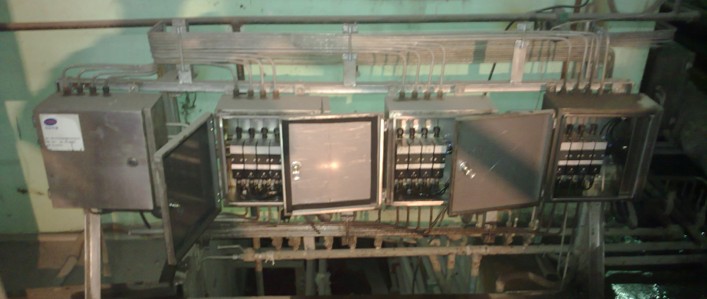
Principle Overview:
Oil air lubrication is the process of mixing separately supplied lubricating fluid with compressed air to form a turbulent flow of oil air mixture, which is then supplied to the lubrication point. Specifically, lubricating oil is quantitatively supplied through solenoid valves and mixed with compressed air in the oil air mixing block (bottom plate) before being transported to various lubrication points.
advantage:
1. Beneficial for environmental protection. Because there is no oil mist, the surrounding environment is not polluted.
2. Precision measurement. Both oil and air can be accurately measured separately and delivered to each lubrication point according to different needs, making it a very economical system.
3. It is not related to the viscosity of the oil. Any oil that can flow can be transported. It does not have the problem of high viscosity atomization difficulty because it does not require atomization.
4. Can be monitored. The working condition of the system can be easily monitored electronically.
5. Especially suitable for rolling bearings, especially heavy-duty rolling mill roll neck bearings, with good air cooling effect, which can reduce the operating temperature of bearings and extend their service life.
6. The fuel consumption is minimal. Only 1/10-1/20 of the fat consumption.
Oil air lubrication is a lubrication device that has only been developed in recent years. It is similar to oil mist lubrication but different from it. Oil air lubrication is similar to oil mist lubrication, both of which use compressed air as a power source to transport thin oil to bearings. The difference is that oil air lubrication does not collide the oil into fine mist, but uses the flow of compressed air to transport the oil along the pipeline to the bearings, so condensation is no longer required. Any liquid that can flow can be transported without being limited by viscosity. The pressure of air transportation is relatively high, around 3 × 105Pa. The air pressure inside the bearing box is also relatively high, around 0.3 × 105Pa. During normal operation, a certain level of lubricating oil is maintained inside the bearing box, so the amount of oil supplied can be determined based on actual consumption. Therefore, lubricating oil is supplied through gaps, while air is supplied continuously. Due to the large number of lubrication points, it was still a challenge a few years ago to evenly distribute the oil air mixture to each bearing. A special wave oil circuit distributor has been invented, which solves this problem and enables the development and application of oil air lubrication, achieving satisfactory results.
 中文
中文 英语|English
英语|English 法语|France
法语|France 印度语|San
印度语|San

